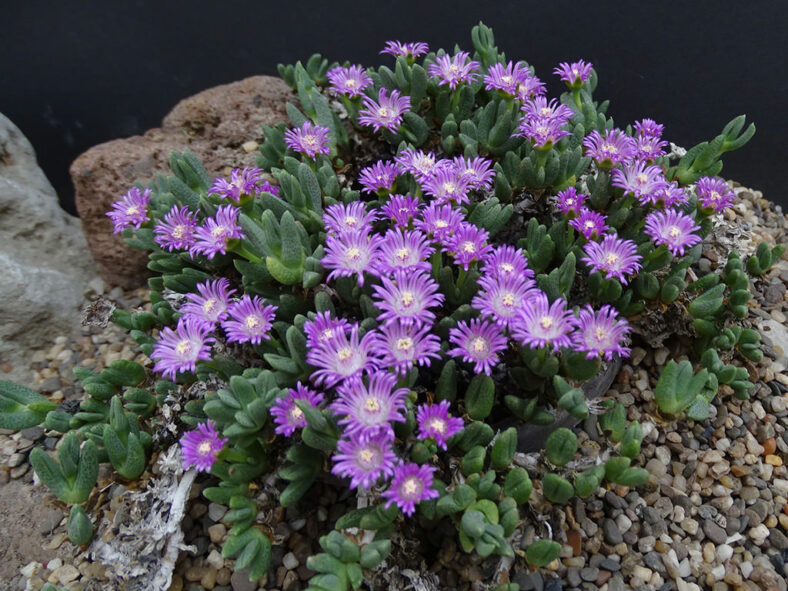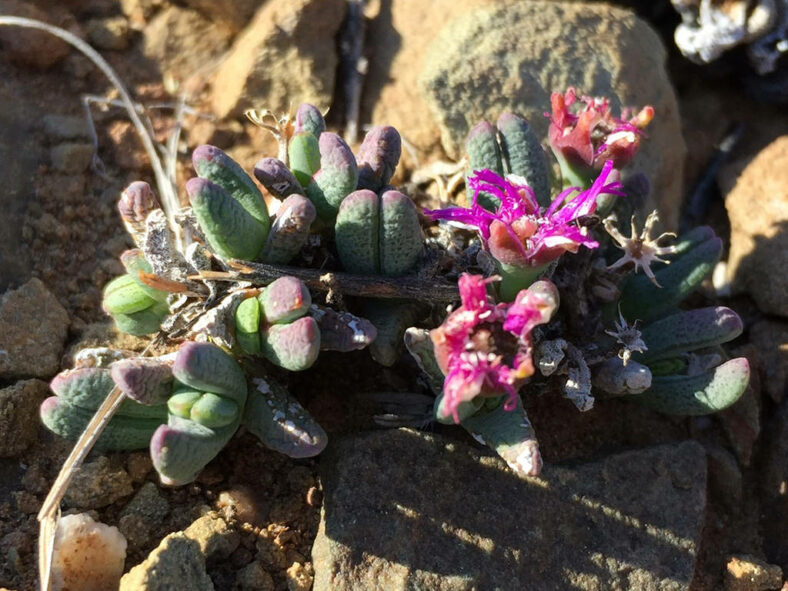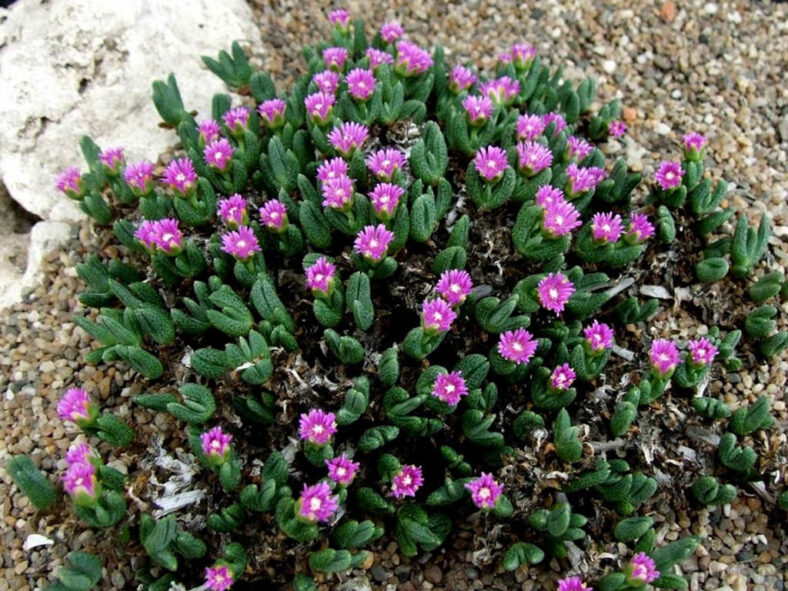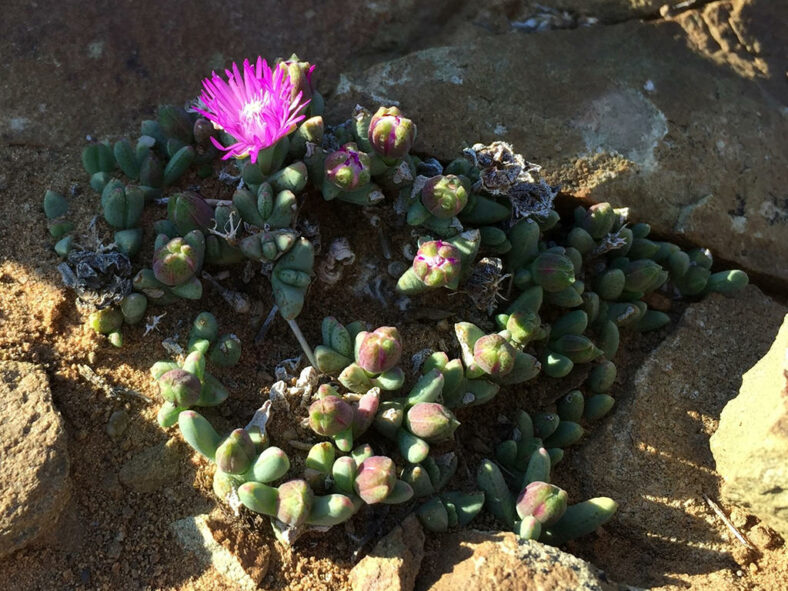Antimima dekenahi was first described as Mesembryanthemum dekenahi by Nicholas Edward Brown and was published in the Bulletin of Miscellaneous Information (Royal Botanic Gardens, Kew) in 1929.
Scientific Name
Antimima dekenahi (N.E.Br.) H.E.K.Hartmann
Synonym(s)
Mesembryanthemum dekenahi, Ruschia dekenahii
Scientific Classification
Family: Aizoaceae
Subfamily: Ruschioideae
Tribe: Ruschieae
Genus: Antimima
Etymology
The specific epithet "dekenahi" (pronounced de-KEN-ah-hee) honors Jacob (Japie) Dekenah (1907-1981), a South African photographer and curator who was known locally as the "walking encyclopedia of Riversdale" for his knowledge of nature and history of the district where he lived his entire life.
Origin
Antimima dekenahi is native to South Africa. It grows in crevices in shale from Williston to Sutherland and Fraserburg in the Northern Cape province.
Description
Antimima dekenahi is a dwarf succulent with short stems that bear pairs of trigonous leaves, forming a compact clump over time. It can grow up to 1.2 inches (3 cm) tall. The fleshy leaves are covered with low papillae.
During late fall and early winter, Antimima dekenahi produces solitary flowers that can reach a diameter of 0.8 inches (2 cm). The flowers have magenta petals and thin staminodes that are white or magenta-tipped. The fruits partly disintegrate, leaving behind star-shaped remnants.

How to Grow and Care for Antimima dekenahi
Light: Antimima dekenahi requires bright light but not too much direct sunlight. So, a windowsill that receives 4 to 5 hours of direct sunlight in the morning and partial shade in the afternoon will be a perfect spot for indoor growing.
Soil: The plant thrives in porous soil, allowing the water to drain away quickly. Therefore, use commercial soil for succulents or make your own well-draining mix.
Temperature: High temperatures are not a problem as long as there is plenty of fresh air, but this plant is not cold-hardy. It grows best in USDA Plant Hardiness Zones 9b to 11b, with average minimum winter temperatures ranging from 25°F to 50°F (-3.9°C to 10°C).
Watering: To keep your Antimima dekenahi healthy, it is most important to know when, how much, and how often to water it. During the dormant period, usually in summer, the plant requires little or no water. From fall to spring, water it thoroughly but allow the soil to dry between waterings.
Fertilizing: As long as you repot this plant every two years, it does not need fertilizer.
Repotting: Even if your plant can stay happy in the same pot for years, you can repot it once in a while to give it more space anytime during the growing season. However, the best time is at the beginning of the growing season.
Propagation: One simple way to propagate this plant is by stem cuttings during the growing season. Another option is to start it from seeds by sowing them in well-draining soil during the fall.
Learn more at How to Grow and Care for Mesembs.
Toxicity of Antimima dekenahi
Antimima dekenahi is considered non-toxic and safe around kids and pets.
Links
- Back to genus Antimima
- Succupedia: Browse succulents by Scientific Name, Common Name, Genus, Family, USDA Hardiness Zone, Origin, or cacti by Genus
Photo Gallery
Click on a photo to see a larger version.


